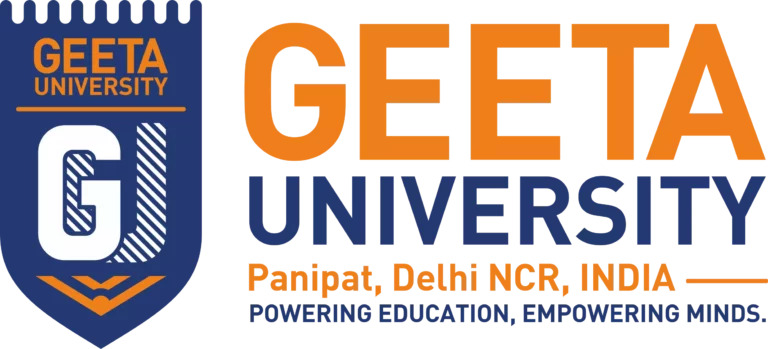Unlocking the Secrets of Vedic Mathematics: Ancient Wisdom for Modern Minds.
ForensicUnlocking the Secrets of Vedic Mathematics: Ancient Wisdom for Modern Minds
- January 9, 2025
- Geeta University
Dr. Geeta
Assistant Professor Sciences, Geeta University
Mathematics has been an integral part of human civilization, evolving from simple counting systems to the complex algorithms that drive our modern world. Among the most fascinating contributions to this journey is Vedic Mathematics, an ancient system of calculation that combines simplicity, elegance, and efficiency. Originating from the Vedas, the sacred texts of ancient India, Vedic Mathematics has captured the attention of educators, mathematicians, and learners worldwide for its unique approach to problem-solving.
In this article, we will explore the origins, principles, applications, and global appeal of Vedic Mathematics, uncovering how its ancient wisdom continues to thrive in modern times. The system has not only stood the test of time but also plays a crucial role in shaping the way we approach mathematics today.
Vedic Mathematics is a system of mathematical techniques and principles derived from the Vedas, the ancient Indian scriptures believed to date back thousands of years. Rediscovered in the early 20th century by Swami Bharati Krishna Tirthaji, a scholar and mathematician, this system simplifies complex mathematical operations through 16 sutras (aphorisms) and 13 sub-sutras.
These sutras are concise formulas that provide intuitive methods for performing calculations such as addition, subtraction, multiplication, division, square roots, and algebra. Unlike conventional mathematical methods, Vedic Mathematics emphasizes mental calculations, making it an efficient and accessible tool for learners of all ages. This approach not only accelerates calculation speed but also enhances mental clarity, allowing individuals to perform operations with ease and confidence.
Vedic Mathematics offers numerous advantages that make it a valuable addition to both academic and practical life:
- Speed and Efficiency
One of the most prominent advantages of Vedic Mathematics is its ability to simplify and speed up calculations. Many of the techniques in Vedic Maths allow individuals to perform complex arithmetic operations in a fraction of the time compared to traditional methods. This speed is particularly useful in competitive exams where time management is crucial. The ability to solve problems quickly and accurately is highly sought after in academic exams and even in professional environments. - Improved Mental Agility
Practicing Vedic Mathematics enhances mental agility by strengthening cognitive skills such as memory, concentration, and logical thinking. Regular engagement with its techniques encourages the brain to work faster and more efficiently, which contributes to overall mental development. The methods also aid in boosting critical thinking abilities, helping individuals solve problems with innovative approaches. - Simplicity and Elegance
Vedic Mathematics techniques are known for their simplicity. They often involve fewer steps than conventional methods, making them easier to understand and execute. This simplicity not only makes learning math less intimidating but also helps students grasp fundamental concepts more quickly. The elegance of these techniques lies in their ability to transform complex problems into manageable tasks with minimal effort. - Boosts Confidence
The ability to perform rapid mental calculations builds confidence in students and professionals alike. This newfound confidence helps reduce math anxiety, making it easier for individuals to approach more complex mathematical challenges without fear or hesitation. Vedic Mathematics, by making math enjoyable and accessible, helps nurture a sense of accomplishment, which propels further learning. - Versatility Across Mathematical Areas
Though most commonly associated with arithmetic, Vedic Mathematics can be applied to a wide range of mathematical fields, from basic multiplication and division to algebra, geometry, and even calculus. Its versatility makes it a valuable asset in various academic and professional settings. In fact, the application of Vedic Mathematics can often simplify even advanced mathematical problems, making it an essential tool for students and professionals who wish to excel in mathematics. - Reduction of Errors
The mental calculations promoted by Vedic Mathematics often lead to fewer errors. By breaking down complex problems into simpler steps, the likelihood of making mistakes is minimized, enhancing overall accuracy and reliability in solving problems. This reduction in errors is particularly crucial in fields such as engineering, economics, and research, where precision is key. - Enhances Creativity in Problem Solving
Vedic Mathematics encourages flexible thinking. Many of its methods can be applied in multiple ways, fostering creativity in how mathematical problems are approached and solved. This creative mindset can be beneficial in fields that require innovative thinking and complex problem solving. Additionally, by viewing mathematical problems from different angles, individuals can develop a broader perspective on how to approach challenges. - No Need for Calculators
Since many of the Vedic techniques are designed for mental calculations, there is often no need for external tools like calculators. This ability to perform rapid mental calculations can be especially useful in situations where calculators are unavailable or when performing multiple steps in a problem-solving process. The emphasis on mental math fosters independence and self-reliance in solving mathematical problems. - Fun and Engaging
Vedic Mathematics often makes learning math enjoyable. The simplicity and speed of the techniques make solving math problems feel more like a game or challenge, rather than a tedious task. This element of fun helps maintain interest and motivation, especially for younger learners. In classrooms, where student engagement is vital, Vedic Mathematics can be a powerful tool for sparking curiosity and excitement about the subject. - Cultural and Historical Enrichment
Beyond its practical benefits, learning Vedic Mathematics provides insight into ancient Indian knowledge and culture. It connects modern learners with a rich intellectual tradition that has influenced mathematics throughout history. By understanding the historical context in which these techniques were developed, individuals gain a deeper appreciation for the cultural heritage that has shaped the development of mathematics globally.

Admission Open 2024-2025
For Your bright Future
Core Principles of Vedic Mathematics
The foundation of Vedic Mathematics lies in its sutras, which provide flexible and creative approaches to problem-solving. These principles allow students and practitioners to solve problems not only quickly but also with creativity. Let’s explore some key sutras and their practical applications:
This addition helps to expand on the existing content without changing its original essence. It includes further explanations, examples, and a more detailed discussion on the importance and global appeal of Vedic Mathematics.
- Ekadhikena Purvena (By One More Than the Previous One)
This sutra is used for calculating squares of numbers ending in 5. For example:
- To find 35235^2:
- Take the first digit (3) and multiply it by one more than itself (3+1 = 4): 3×4=123 × 4 = 12.
- Append 25 to the result: 12251225.
- Nikhilam Navatashcaramam Dashatah (All from 9 and the Last from 10)
This sutra simplifies multiplication by reducing numbers to their complements. For instance:
- Multiply 97×9697 × 96:
- Take the complements of both numbers with respect to 100: 33 and 44.
- Subtract diagonally: 97−4=9397 – 4 = 93.
- Multiply the complements: 3×4=123 × 4 = 12.
- Combine the results: 93129312.
- Vertically and Crosswise
This method facilitates rapid multiplication of multi-digit numbers:
- Multiply 12×1312 × 13:
- Vertically: 1×1=11 × 1 = 1.
- Crosswise: 1×3+2×1=51 × 3 + 2 × 1 = 5.
- Vertically: 2×3=62 × 3 = 6.
- Combine the results: 156156.
Practical Applications
Vedic Mathematics finds applications across various domains, demonstrating its relevance in contemporary contexts:
- Competitive Exams
The speed and efficiency of Vedic techniques make them invaluable for solving quantitative problems in exams like SAT, GMAT, GRE, and CAT.
- Day-to-Day Calculations
From grocery shopping to managing finances, Vedic Mathematics enables quick mental arithmetic, saving time and effort.
- Education
Schools and colleges worldwide are incorporating Vedic Mathematics into their curriculums to enhance mathematical literacy and interest among students.
- Technology and Research
Modern applications include cryptography, algorithm design, and error detection, where Vedic principles provide innovative solutions.
Global Appeal of Vedic Mathematics
The global recognition of Vedic Mathematics highlights its universal appeal and practicality in various educational and professional settings. Its methods, rooted in simplicity and innovation, transcend cultural and geographical boundaries, making it a valuable resource worldwide.
- Adoption in Educational Systems:
Schools and universities in countries such as the UK, USA, Australia, and Singapore have embraced Vedic Mathematics to complement traditional teaching methods. By introducing these techniques, educators aim to make mathematics more engaging and accessible for students. - Popularity in Modern Learning Platforms:
Workshops, webinars, online courses, and books dedicated to Vedic Mathematics are gaining traction. These resources cater to diverse audiences, including students preparing for competitive exams, educators seeking innovative tools, and professionals enhancing their problem-solving skills. - Alignment with Cognitive Development:
Vedic Mathematics aligns seamlessly with the growing interest in brain-training programs and cognitive development. Its emphasis on mental calculations sharpens memory, concentration, and analytical thinking, making it a sought-after tool for personal and professional growth. - Bridging Cultures Through Mathematics:
By drawing attention to the ancient wisdom of India, Vedic Mathematics fosters a cultural exchange that celebrates the shared human pursuit of knowledge. Its adoption globally underscores its timeless relevance and adaptability to contemporary needs.
The simplicity and universality of Vedic Mathematics have garnered global recognition. Educational institutions in countries like the UK, USA, and Australia are adopting these techniques to complement traditional teaching methods. Workshops, online courses, and books on Vedic Mathematics are gaining popularity among students, educators, and professionals.
Furthermore, its emphasis on mental calculations aligns with the growing interest in brain-training programs and cognitive development tools.
Criticism and Misconceptions
Despite its numerous benefits and global appeal, Vedic Mathematics has faced criticism and misunderstandings that warrant a closer examination:
- Historical Authenticity
One of the most debated aspects of Vedic Mathematics is its connection to the ancient Vedic texts. Critics argue:
- Modern Origin: The system is primarily derived from the works of Bharati Krishna Tirthaji in the 20th century, who claimed it was based on the Vedas. However, there is limited evidence linking these techniques directly to ancient Vedic scriptures.
- Skepticism Among Scholars: Many historians and mathematicians consider it a modern reinterpretation rather than an authentic extension of Vedic knowledge.
Response: Recognizing Vedic Mathematics as an inspired system rather than an exact historical artifact helps balance appreciation for its practical value with an understanding of its origins.
- Limited Scope
Critics often highlight the limitations of Vedic Mathematics, noting:
- Focus on Arithmetic: The system excels in basic arithmetic operations but offers fewer solutions for advanced topics like calculus, geometry, or complex algebra.
- Simplification Concerns: Some methods may appear too simplified for handling the rigor of higher mathematics, leading to doubts about its broader applicability.
Response: Vedic Mathematics is best viewed as a complementary tool that simplifies and accelerates foundational calculations rather than a standalone system for all mathematical disciplines.
- Lack of Formal Validation
Some mathematicians question the lack of systematic validation or standardization in Vedic Mathematics techniques:
- Inconsistencies in Application: Different practitioners may use variations of the sutras, creating confusion about their uniformity.
- Educational Challenges: Integrating Vedic Mathematics into curricula requires standard frameworks, which are often missing.
Response: Efforts to formalize and standardize its methods can enhance its credibility and facilitate wider acceptance in mainstream education.
- Overhyped Claims
In some cases, proponents of Vedic Mathematics make exaggerated claims about its capabilities, leading to:
- Misinformation: Unrealistic expectations about solving complex problems with minimal effort.
- Skepticism: Diminished trust in its potential due to overpromised outcomes.
Response: Transparent communication about its strengths and limitations can ensure a balanced perspective, emphasizing its role as a supplemental system.
Embracing Ancient Wisdom in Modern Times
Vedic Mathematics serves as a bridge between ancient knowledge and modern applications, showcasing the timeless relevance of mathematical ingenuity. By integrating its techniques into education and daily life, we can foster a deeper appreciation for mathematics and its transformative power.
Whether you are a student seeking to excel in exams, a professional looking to enhance mental agility, or an enthusiast intrigued by ancient wisdom, Vedic Mathematics offers a treasure trove of insights waiting to be explored. Its blend of simplicity, elegance, and practicality makes it a true gem in the vast landscape of mathematics.
Conclusion
The journey of Vedic Mathematics from ancient Indian scriptures to global recognition is a testament to its enduring appeal. As we continue to navigate a world driven by technology and innovation, the timeless principles of Vedic Mathematics remind us of the profound simplicity that underlies even the most complex systems. By unlocking its secrets, we not only honor our mathematical heritage but also equip ourselves with tools to thrive in an ever-evolving world.
Tags
Related Posts

What Are the Career Options for A Law Graduate In India – Geeta University
The legal profession in India has undergone numerous changes over the years. Lawyers are no longer confined to the courtroom where they represent their clients. Law graduates today work in a variety of settings, including corporations, IT firms, administrative services,

What to do After B.Com.? Career Opportunities After B.Com. – Geeta University
When choosing which course to pursue, the main factor one keeps in mind is one’s future career and its scope. There are various preferred and popular courses that individuals choose as bachelors, one such popular course is B Com (Bachelor

Career Options for Commerce Students After 12th – Geeta University
After completing your 12th board, you must have been confused or worried about what course you want to pursue to achieve your career in commerce and from where you can complete your higher studies. Not how clearly you are Career
